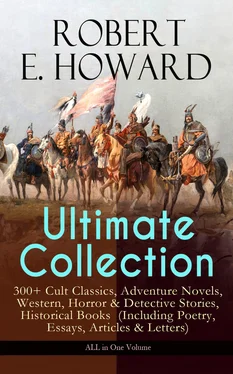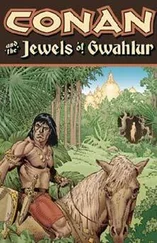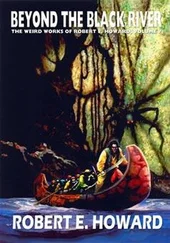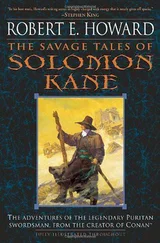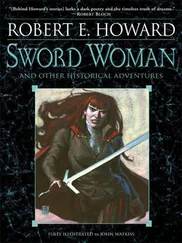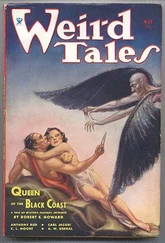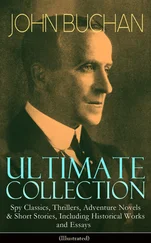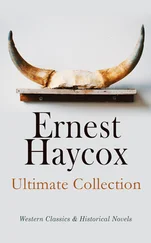Behind them hordes of Æsir and Vanir swarmed into the lands, and the Pictish empire reeled beneath their strokes. Nemedia was overthrown, and the half-civilized Nordics fled before their wilder kinsmen, leaving the cities of Nemedia ruined and deserted. These fleeing Nordics, who had adopted the name of the older kingdom, and to whom the term Nemedian henceforth refers, came into the ancient land of Koth, expelled both Picts and Hyrkanians, and aided the people of Shem to throw off the Hyrkanian yoke. All over the western world, the Picts and Hyrkanians were staggering before this younger, fiercer people. A band of Æsir drove the eastern riders from Brythunia and settled there themselves, adopting the name for themselves. The Nordics who had conquered Hyperborea assailed their eastern enemies so savagely that the dark-skinned descendants of the Lemurians retreated into the steppes, pushed irresistibly back toward Vilayet.
Meanwhile the Cimmerians, wandering southeastward, destroyed the ancient Hyrkanian kingdom of Turan, and settled on the southwestern shores of the inland sea. The power of the eastern conquerors was broken. Before the attacks of the Nordheimr and the Cimmerians, they destroyed all their cities, butchered such captives as were not fit to make the long march, and then, herding thousands of slaves before them, rode back into the mysterious east, skirting the northern edge of the sea, and vanishing from western history, until they rode out of the east again, thousands of years later, as Huns, Mongols, Tatars and Turks. With them in their retreat went thousands of Zamorians and Zingarans, who were settled together far to the east, formed a mixed race, and emerged ages afterward as gypsies.
Meanwhile, also, a tribe of Vanir adventurers had passed along the Pictish coast southward, ravaged ancient Zingara, and come into Stygia, which, oppressed by a cruel aristocratic ruling class, was staggering under the thrusts of the black kingdoms to the south. The red-haired Vanir led the slaves in a general revolt, overthrew the reigning class, and set themselves up as a caste of conquerors. They subjugated the northern-most black kingdoms, and built a vast southern empire, which they called Egypt. From these red-haired conquerors the earlier Pharaohs boasted descent.
The western world was now dominated by Nordic barbarians. The Picts still held Aquilonia and part of Zingara, and the western coast of the continent. But east to Vilayet, and from the Arctic circle to the lands of Shem, the only inhabitants were roving tribes of Nordheimr, excepting the Cimmerians, settled in the old Turanian kingdom. There were no cities anywhere, except in Stygia and the lands of Shem; the invading tides of Picts, Hyrkanians, Cimmerians and Nordics had levelled them in ruins, and the once dominant Hyborians had vanished from the earth, leaving scarcely a trace of their blood in the veins of their conquerors. Only a few names of lands, tribes and cities remained in the languages of the barbarians, to come down through the centuries connected with distorted legend and fable, until the whole history of the Hyborian age was lost sight of in a cloud of myths and fantasies. Thus in the speech of the gypsies lingered the terms Zingara and Zamora; the Æsir who dominated Nemedia were called Nemedians, and later figured in Irish history, and the Nordics who settled in Brythunia were known as Brythunians, Brythons or Britons.
There was no such thing, at that time, as a consolidated Nordic empire. As always, the tribes had each its own chief or king, and they fought savagely among themselves. What their destiny might have been will not be known, because another terrific convulsion of the earth, carving out the lands as they are known to moderns, hurled all into chaos again. Great strips of the western coast sank; Vanaheim and western Asgard—uninhabited and glacier-haunted wastes for a hundred years—vanished beneath the waves. The ocean flowed around the mountains of western Cimmeria to form the North Sea; these mountains became the islands later known as England, Scotland and Ireland, and the waves rolled over what had been the Pictish wilderness and the Bossonian marches. In the north the Baltic Sea was formed, cutting Asgard into the peninsulas later known as Norway, Sweden and Denmark, and far to the south the Stygian continent was broken away from the rest of the world, on the line of cleavage formed by the river Nilus in its westward trend. Over Argos, western Koth and the western lands of Shem, washed the blue ocean men later called the Mediterranean. But where land sank elsewhere, a vast expanse west of Stygia rose out of the waves, forming the whole western half of the continent of Africa.
The buckling of the land thrust up great mountain ranges in the central part of the northern continent. Whole Nordic tribes were blotted out, and the rest retreated eastward. The territory about the slowly drying inland sea was not affected, and there, on the western shores, the Nordic tribes began a pastoral existence, living in more or less peace with the Cimmerians, and gradually mixing with them. In the west the remnants of the Picts, reduced by the cataclysm once more to the status of stone-age savages, began, with the incredible virility of their race, once more to possess the land, until, at a later age, they were overthrown by the westward drift of the Cimmerians and Nordics. This was so long after the breaking-up of the continent that only meaningless legends told of former empires.
This drift comes within the reach of modern history and need not be repeated. It resulted from a growing population which thronged the steppes west of the inland sea—which still later, much reduced in size, was known as the Caspian—to such an extent that migration became an economic necessity. The tribes moved southward, northward and westward, into those lands now known as India, Asia Minor and central and western Europe.
They came into these countries as Aryans. But there were variations among these primitive Aryans, some of which are still recognized today, others which have long been forgotten. The blond Achaians, Gauls and Britons, for instance, were descendants of pure-blooded Æsir. The Nemedians of Irish legendry were the Nemedian Æsir. The Danes were descendants of pure-blooded Vanir; the Goths – ancestors of the other Scandinavian and Germanic tribes, including the Anglo-Saxons—were descendants of a mixed race whose elements contained Vanir, Æsir and Cimmerian strains. The Gaels, ancestors of the Irish and Highland Scotch, descended from pure-blooded Cimmerian clans. The Cymric tribes of Britain were a mixed Nordic-Cimmerian race which preceded the purely Nordic Britons into the isles, and thus gave rise to a legend of Gaelic priority. The Cimbri who fought Rome were of the same blood, as well as the Gimmerai of the Assyrians and Grecians, and Gomer of the Hebrews. Other clans of the Cimmerians adventured east of the drying inland sea, and a few centuries later mixed with Hyrkanian blood, returned westward as Scythians. The original ancestors of the Gaels gave their name to modern Crimea.
The ancient Sumerians had no connection with the western race. They were a mixed people, of Hyrkanian and Shemitish bloods, who were not taken with the conquerors in their retreat. Many tribes of Shem escaped that captivity, and from pure-blooded Shemites, or Shemites mixed with Hyborian or Nordic blood, were descended the Arabs, Israelites, and other straighter-featured Semites. The Canaanites, or Alpine Semites, traced their descent from Shemitish ancestors nuxed with the Kushites settled among them by their Hyrkanian masters; the Elamites were a typical race of this type. The short, thick-limbed Etruscans, base of the Roman race, were descendants of a people of mixed Stygian, Hyrkanian and Pictish strains, and originally lived in the ancient kingdom of Koth. The Hyrkanians, retreating to the eastern shores of the continent, evolved into the tribes later known as Tatars, Huns, Mongols and Turks.
Читать дальше
